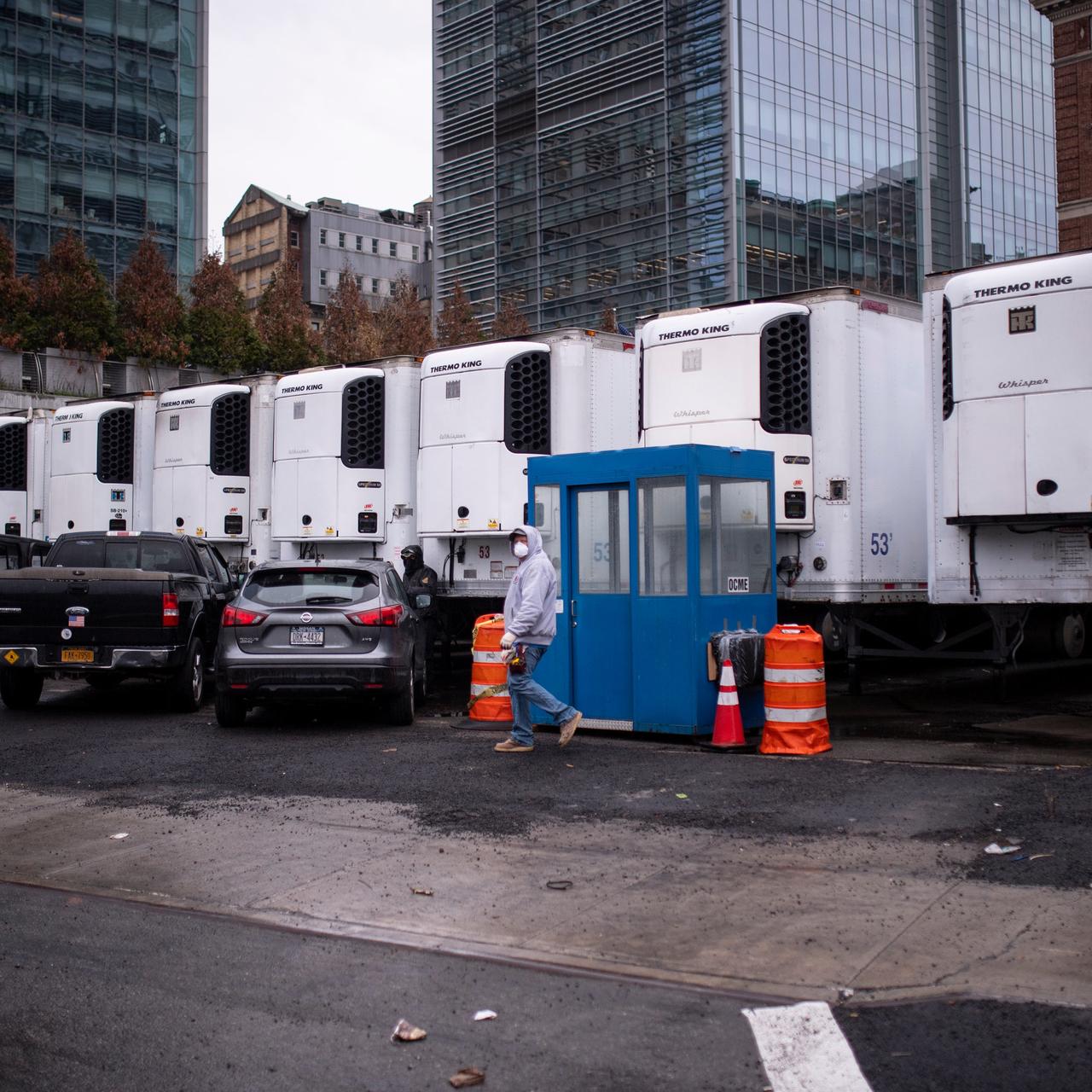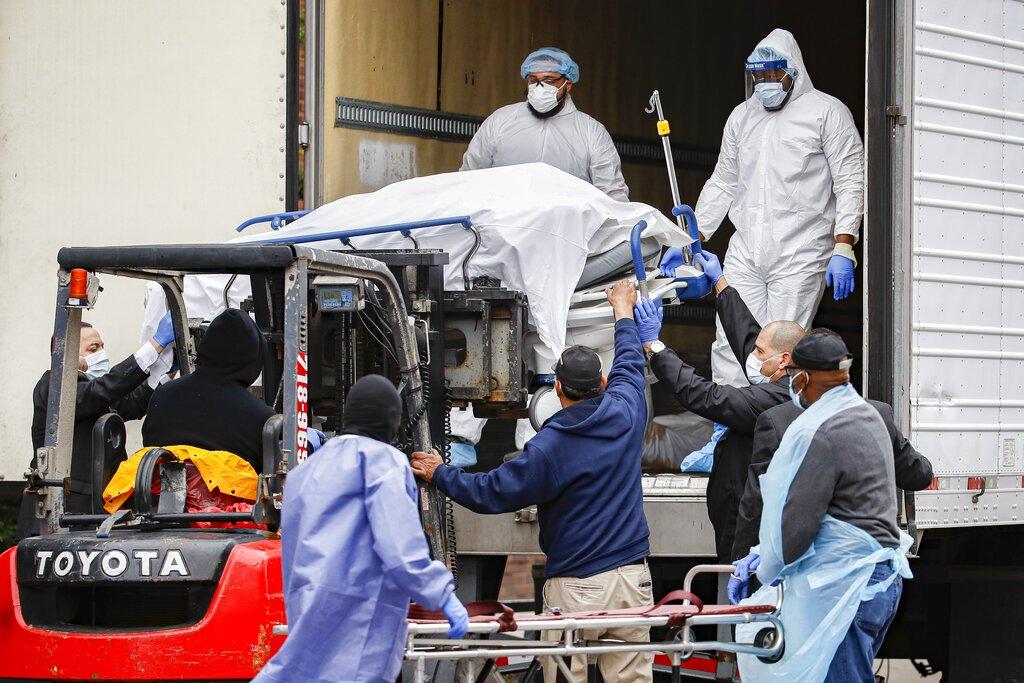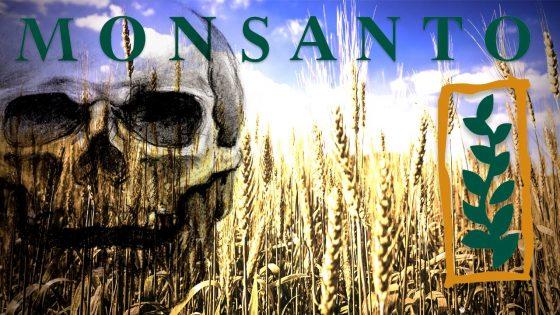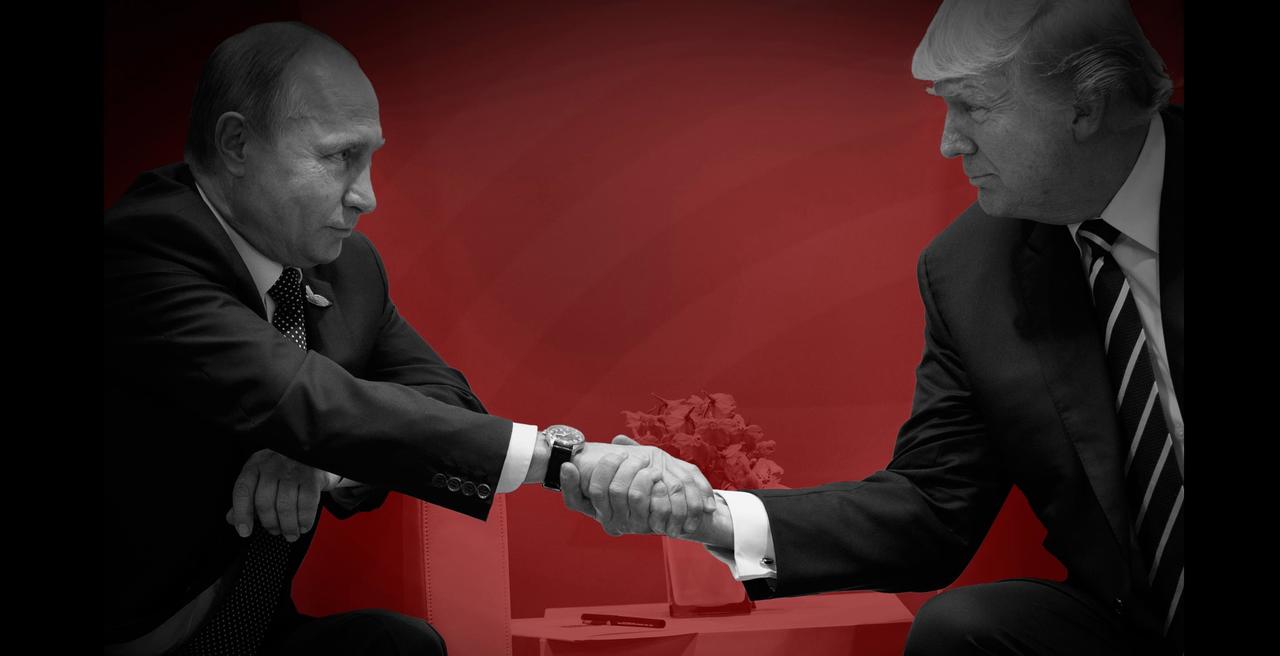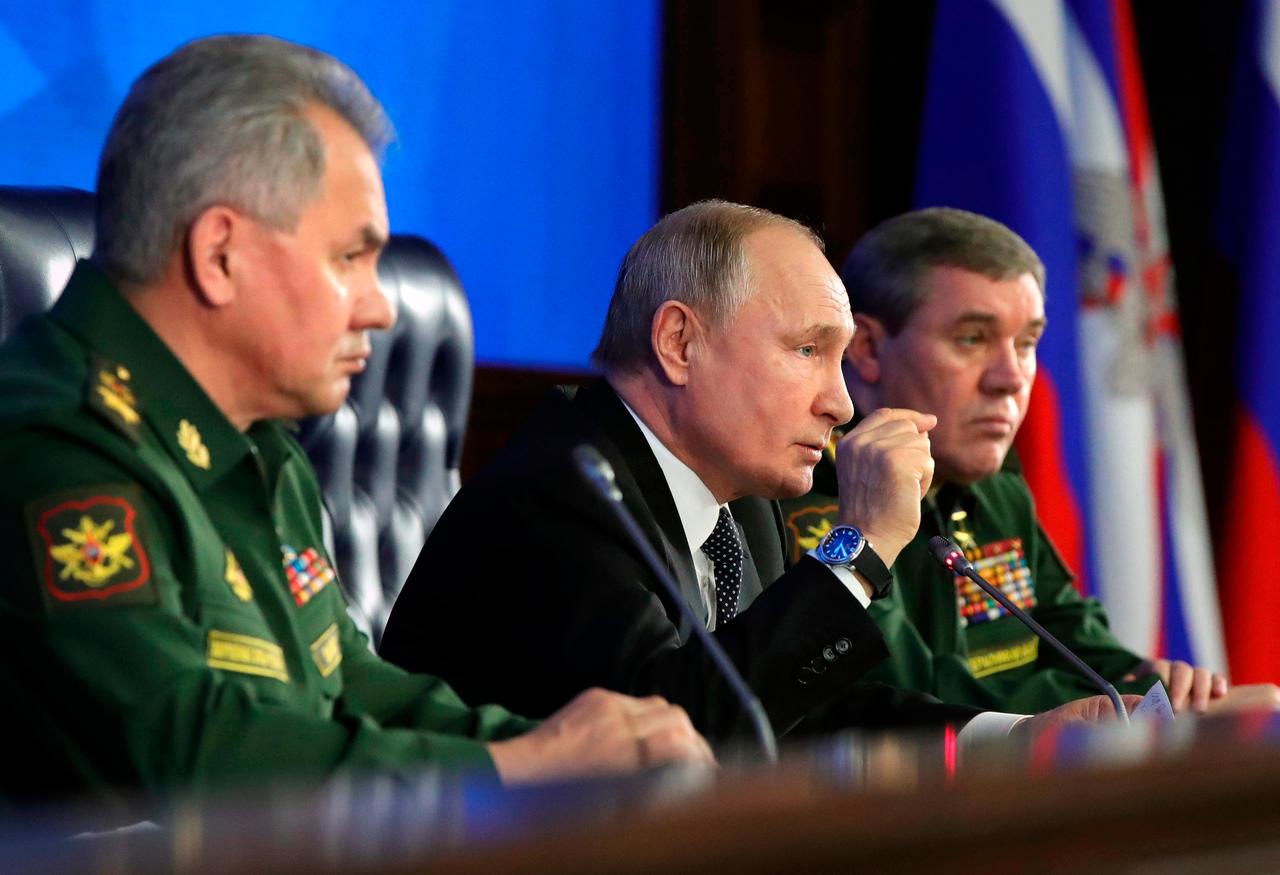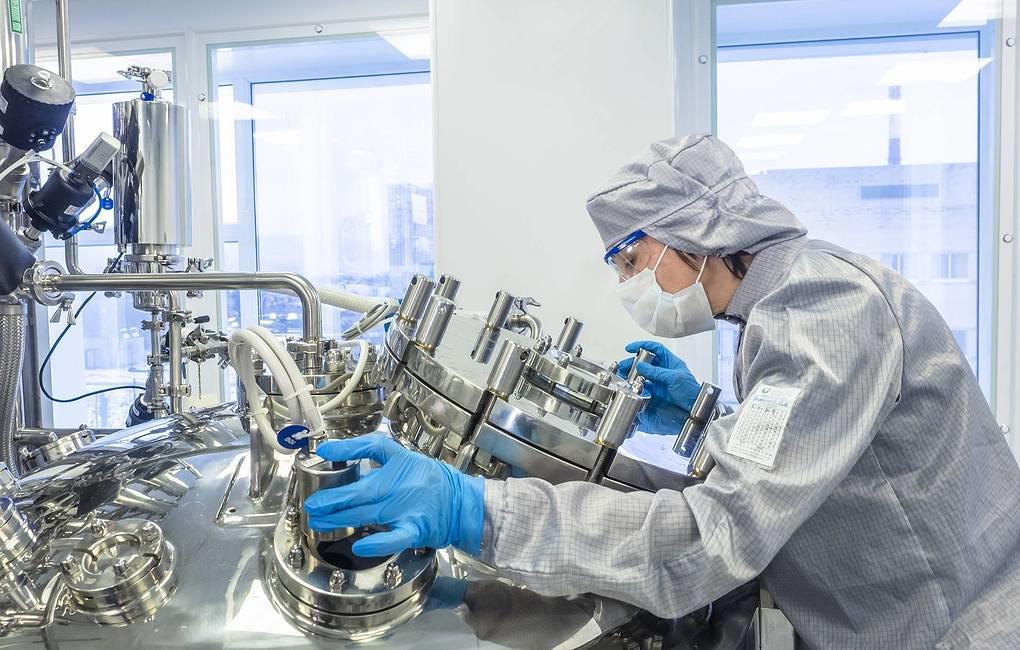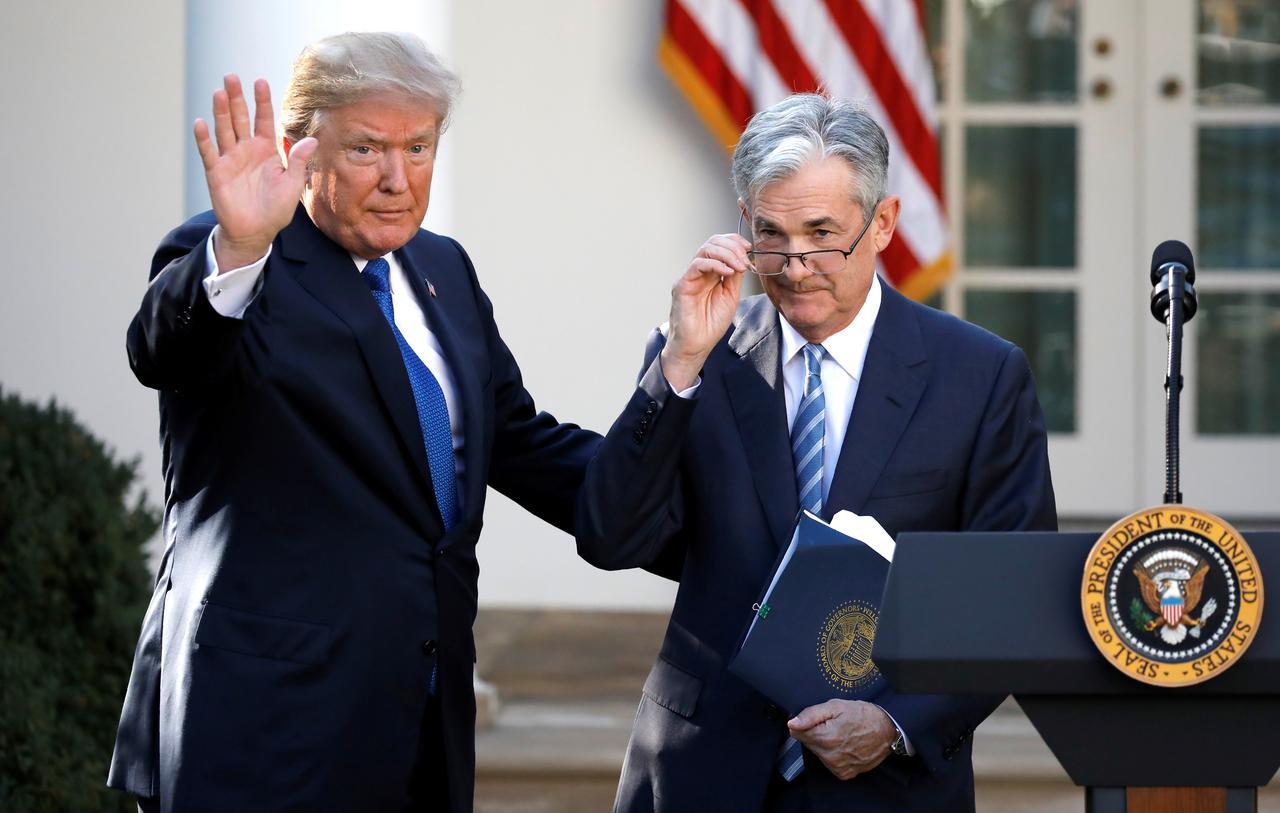Fast reduction of the COVID-19 pandemic is necessary for public health, re-opening the American economy, restoration of rights and liberties, and prevention of large second or third waves. There is one very helpful step everyone can take to reclaim our country from the viral invasion: All Americans should wear masks in public. Masking is contrary to what the federal government has been telling the public for months. The government’s bad advice is one of the many ways that the U.S. government, like many European governments, has worsened the pandemic.
To be clear, I’m not telling you to swipe a N95 mask from a health care worker. Many types of masks, including those you can make at home, will be helpful.
The first part of this essay observes the differing rates of infection and death in nations that have pro-mask policies and those that do not. Part II describes different types of masks. Part III explains infection routes for SARS-CoV-2 (severe acute respiratory syndrome coronavirus 2). Although the virus itself is smaller than the mesh openings in even the best masks, many types of masks can block infection via water droplets (e.g., from coughs or sneezes), because droplets are larger than mesh openings.
Part IV summarizes studies on the protective effects of hospital grade masks and of improvised masks, including tea towels, t-shirts, pillowcases, and others. While improvised masks are not as good as medical ones, they are still helpful. After the medical supply chain has been restored and health care workers have all the masks they need, high-volume production of medical masks should continue so that they are available to the entire public. Taiwan provides a good example for other nations.
Part V addresses three arguments against universal mask wearing. First, it is said that only symptomatic people should wear masks. This is among the worst public health advice ever given; people who are asymptomatic or presymptomatic are still contagious. Second, anti-mask rhetoric is intended to deter people from interfering with medical supply chains. However, homemade masks do not remove anything from medical supplies. Third, mask wearing may induce riskier behavior in some people. The last point is valid, but it is outweighed by the enormous benefits from mask wearing by people who do not take extra risks.
Finally, Part VI briefly provides some links for people to learn how to make and sterilize masks at home.
I. Observations from other nations
Although some people stigmatize mask wearers, the realistic view is that mask-wearing can be pro-social. East Asians have so understood for decades. What are the results there?
It is impossible to draw accurate conclusions from China, since there is no freedom of the press; inquiring American journalists have been expelled, and the Chinese Communist Party (CCP) dictatorship has lied about the pandemic from day one and continues to do so. Jim Geraghty, The Comprehensive Timeline of China’s COVID-19 Lies, National Review Online, Mar. 23, 2020.
Instead, consider some nearby nations in East Asia that have a free press (Taiwan and South Korea), or least more press freedom than communist China (Singapore). These nations have extensive economic relations with and travel to/from China. None have had to resort to the extreme measure of stay-at-home orders for the general population. People are going about their daily lives mostly as before. In Taiwan and South Korea, mask-wearing is a social necessity during pandemics, and is acceptable at all times, including for people who do not feel sick. Singapore has adopted pro-mask policies in response to the pandemic.
In February, Taiwan’s President Tsai Ing-wen ordered a national campaign for mask production and wearing. Mask exports were prohibited. A crash program to create many new mask factories was implemented. The program got up to speed ahead of schedule. Masks are distributed via pharmacies to the entire population; the rationing system is several masks per week per person, with children getting more. Increased production has increased the ration. Teng Pei-ju, Taiwan sets up 60 face mask production lines in a month: Daily production of face masks projected to reach 10 million by mid-March, Taiwan News, Mar. 6, 2020. Now, with massive production, Taiwan has just donated two million hospital masks to the United States.
No one claims that masks alone will defeat the pandemic, or that masks are the sole reason why non-communist East Asia is doing better than the United States. For example, a key to success in South Korea was prompt use of a just-invented test for COVID-19, at a time when the number of cases was low enough for rigorous contact tracing. In the United States, though, the test was prohibited by the sclerotic Food and Drug Administration. Paul Detrick, The Coronavirus Testing Debacle Stems From Decades of Bad FDA Policy: The agency’s emphasis on caution over speed led to needless suffering and loss of life long before the COVID-19 pandemic, Reason, Mar. 27, 2020.
In the West, mask wearers have been stigmatized–a problem aggravated by incorrect advice (discussed below) that people should only wear face masks if they are experiencing symptoms. Attitudes are changing rapidly, however.
For example, the Czech, Slovak, Austrian, and Bosnian governments have ordered citizens to wear masks outside the home, universally or under some circumstances. So have some German municipalities. More and more Italians are voluntarily doing the same. Drew Hinshaw & Catherine Luckey, U.S. Takes New Look At Advice on Use of Masks, Wall Street Journal, Apr. 1, 2020. The Mayor of Los Angeles recommends that residents to wear masks outside the home. Colorado Senator Michael Bennet uses a homemade mask and urges everyone to do the same.
The comparative international data suggest that widespread mask wearing has very large social benefits. A new policy paper by Yale professors rigorously examines the growth rates in COVID-19 (coronavirus disease 2019) in 42 nations, since the 100th confirmed positive test in each nation. The study compares nations with pre-existing pro-mask social norms (South Korea, Taiwan, Japan, China), countries that have recently adopted pro-mask policies (Singapore, Bulgaria, Thailand, Romania, Czech Republic, Switzerland, Italy), and countries without pro-mask policies. The study should not have included Chinese government data on COVID-19, which like CCP data on everything else, are notoriously falsified. Scott N. Romaniuk & Tobias Burgers, Can China’s COVID-19 Statistics Be Trusted? From GDP figures to coronavirus counts, China’s government has a long history of manipulating data for political gain, The Diplomat, Mar. 26, 2020.
Putting China aside, the international trends are still clear. In short, countries with pro-mask norms cut the growth rate of infection by 8-10%, depending on the model used. Countries with pro-mask norms had a growth rate in COVID-19 deaths of 11%, whereas countries without such norms had a death growth rate of 21%.
How much good a single individual can do by wearing a mask can be illustrated by economic impact. By contributing to reduction in mortality, each person who wears a mask confers on society a benefit of $3,000 to $6,000. On top of that are the unquantified but enormous advantage of allowing a speedier return of economic and social activity. Unemployment and social isolation are long-known to cause many types of health problems and social ills, so the sooner they are ended, the better for all of us. As the Yale authors point out, even if they overestimated mask benefits by ten-fold, the individual who wears a mask still confers a social benefit of at least $300. Jason Abaluck et al., The Case for Universal Cloth Mask Adoption & Policies to Increase the Supply of Medical Masks for Health Workers, Apr. 1, 2020.
II. Types of masks
Three types of masks are relevant here. First is the N95 mask, known as FFP in Europe. It blocks 95% of particles that are .3 microns are larger. A micron, also called a micrometer (μm), is one millionth of a meter; a human hair is 50 microns wide. One micron is equal to one thousand nanometers. A nanometer (nm) is one billionth of a meter.
Pre-pandemic, N95s were worn not only by medical personnel, but also by construction workers, DIYers, and anyone else who wanted to avoid inhaling particles. Under normal, non-shortage conditions, a N95 is discarded after a single use—a visit to a patient or a session of construction work.
The standard N95 is not protective against oily particles, such as the fumes from oil-based wood coatings; for these, workers wear a P95 mask. The P95 is much more cumbersome, and looks like a gas mask, which it is. It uses replaceable filters.
For the time being, N95 and P95 masks/filters are in short supply and are being appropriately rationed to hospitals and other health care workers.
However, some people may have leftover N95 masks from home construction projects and the like. Masks that have previously been worn, or that are no longer in their original wrapper (and therefore have been exposed to air), are not suitable for hospital donation. Even though not preferred by medical personnel, they can be effective for ordinary people to reduce viral transmission, in both directions.
Next best is the surgical mask. You’ve seen doctors wearing these in operating rooms, and you’ve also seen East Asians wearing them in airports. If you travel in East Asia, you know that in a large crowd of people, it’s never unusual to see several people sporting them. The best surgical masks are “high-density.” Some studies distinguish high-density masks from others, while others just examine surgical masks in general.
There are presently plenty of surgical masks available for sale on Amazon. However, these appear to mainly from manufacturers in China. Given the terrible quality of Chinese medical exports recently, there is no reason to believe these products to be well-made.
Finally, there are masks that almost anyone can make from materials at home, such as 100% cotton t-shirts. Nobody claims that they perform as well an N95 or a high density surgical mask. But according to medical research, detailed below, improvised masks do reduce inbound and outbound viral transmission. Any reduction is good, and the more reduction by the more people, the better.
III. Transmission modes
SARS-CoV-2 enters the body via the eyes, nose, or throat. The pathway can be direct (e.g., getting hit by a cough) or indirect—someone coughs on his hand and later touches a doorknob; someone else touches that doorknob and later touches her hand to her mouth.
After SARS-CoV-2 is established in the victim’s body and is reproducing, it exits the body through three main pathways. One is the southern land route. The other two are the mouth and nose. The viral shedding happens during normal breathing, and in greater quantity and distance for coughs and sneezes. (More on them below.)
The southern route is one reason you should do what your mother told you: wash your hands for at least 20 seconds after you go to the bathroom. You should also wash your hands anytime you touch a surface that could have the virus. SARS-CoV-2 can exist for up 4 hours on copper; 24 hours on cardboard; and 72 hours on plastic or stainless steel. Neeltje van Doremalen et al., Aerosol and Surface Stability of SARS-CoV-2 as Compared with SARS-CoV-1 (letter), New England Journal of Medicine, Mar. 17, 2020. A review of prior studies of other coronaviruses found persistence on metal, glass, or plastic up to 9 days. G. Kampf et al., Persistence of coronaviruses on inanimate surfaces and their inactivation with biocidal agents. 104 Journal of Hospital Infection 246 (2020).
Although this essay is about masks, it should be noted that wearing gloves in public is a good idea–especially when touching surfaces that are touched by many other people, such as gas station pumps, ATM machines, credit card readers, and so on. Medical grade disposable gloves are currently being rationed for health care providers, but there are plenty of alternatives, since you probably already own kitchen gloves, dress gloves, athletic gloves, and so on. Clean them after each use; soap and water should work fine, since SARS-CoV-2 is highly vulnerable to soapy water. In brief, soapy water dissolves the virus’s outer membrane, and the virus crumbles into nothing.
Instead of gloves, you can use a tissue, paper towel, or handkerchief as a touch barrier.
There are two air modes of travel for the virus. An aerosol is a small solid carried in a gas. An aerosol is smaller than 10 microns; it can float in the air and be carried by wind or ventilation. A droplet is a liquid that carries the virus. Speaking always produces droplets, even if you don’t talk like Daffy Duck.
Droplets are much bigger than aerosols, at least .1 millimeter or larger. With mere exhalation, droplets fall within 1.5 meters of the breather. Because of the greater velocity of a cough or sneeze, droplets travel further. A M.I.T. study found that cough droplets have a contamination range of up to 2.5 meters (8 feet). Lydia Bourouiba et al., Violent expiratory events: on coughing and sneezing, 745 Journal of Fluid Mechanics 537 (2014). Sneezes—which have initial velocities of 1,000 to 2,000 feet per second (similar to a gunshot)—would have even longer range.
The protective value of masks depends partly on the size of the openings in the mesh. The smaller the openings, the better. SARS-CoV-2 is about 100 nanometers in diameter. In other words, the virus is about a hundred-millionth of a meter. Marco Cascella et al., Features, Evaluation and Treatment Coronavirus (COVID-19), StatPearls.com, Mar. 20, 2020 (virus diameter is “approximately 60–140 nm”); Jeong-Min Kim, Identification of Coronavirus Isolated from a Patient in Korea with COVID-19, 11 Osong Public Health Res. Perspect. 3 (Feb. 2020) (“Virus particle size ranged from 70–90 nm.”).
Thus, SARS-CoV-2 virus is smaller than the mesh openings in even an N95 mask. So masks of any type would not provide full protection against aerosolized SARS-CoV-2. A three-hour study of aerosolized SARS-CoV-2 found the virus persisting in the air for all three hours. van Doremalen et al., supra.
But masks would be protective against SARS-CoV-2 carried in droplets, which are far larger than aerosols. Notably, while everyone agrees that the virus is spread by droplets, whether or how much it is spread by aerosols is unclear. Ed Yong, Everyone Thinks They’re Right About Masks: How the coronavirus travels through the air has become one of the most divisive debates in this pandemic, The Atlantic, Apr. 1, 2020.
Although much is unknown, some evidence indicates that SARS-CoV-2, compared to some other coronaviruses, is particularly suited for spreading by an initial landing in the nose, via large droplets. Accordingly, masks capable of stopping droplets would offer important protection.
An editorial in Journal of the American Medical Association, JAMA, discussed how to overcome mask shortages in hospitals. As the editorial explained, the N95 stops 95% of .3 micron particles. A household anti-allergy air circulation filter with a MERV (minimum efficiency reporting value) of 14, will stop 75%. A filter with MERV of 13 will stop 50%. The N95 mask is equivalent to MERV 16.
Stopping some viruses is better than stopping none. So regarding household air filters and vacuum cleaner bags, JAMA wrote: “Although the SARS-CoV-2 particle is smaller than 0.2 μm [the mesh opening in a N95], the water droplets carrying it are larger and largely blocked by these filters.” Edward Livingston et al., Sourcing Personal Protective Equipment During the COVID-19 Pandemic (editorial), JAMA, Mar. 28, 2020.
III. Protective values of masks
The studies below examined masks’ role in reducing airborne transmission. The research shows important protective effects from all types of masks. However, the studies did not examine another potential mask benefit that is particularly relevant to SARS-CoV-2: as long as you’re wearing a mask, any type, you won’t be touching your mouth or nose. And wearing the mask might help remind you not to touch your eyes. Even if you fiddle with the mask to adjust it, touching your cheek is less dangerous than touching your nose or mouth.
SARS-CoV-2 is in the same family as the SARS (severe acute respiratory syndrome) coronavirus, which caused pandemics in some areas in 2003. Therefore, evidence about the effect of masks against original SARS may be informative. (As with SARS-CoV-2, the original SARS problem was massively worsened by the Chinese Communist Party’s lies, repression, and coverups. Yanzhong Huang, The SARS Epidemic and Its Aftermath in China: A Political Perspective, in Learning from SARS: Preparing for the Next Disease Outbreaks (Wash., D.C.: Institute of Medicine, National Academies Press, 2004).)
A metastudy of 138 papers on SARS 2003 found that handwashing at least 10 times a day reduced transmission by 55%. Wearing gloves reduced it 57%. A mask in general reduced transmission by 68%. Washing + gloves + masks (including surgical masks) reduced transmission by 91%. The N95 mask alone was 91% effective. Tom Jefferson et al., Physical interventions to interrupt or reduce the spread of respiratory viruses: systematic review, 336 British Medical Journal 77 (2008).
According to a study of influenza in Hong Kong households, hand hygiene plus facemasks were effective in reducing intrahousehold transmission, if the proactive measures began within 36 hours of a family member showing symptoms. Benjamin J. Cowling, Facemasks and Hand Hygiene to Prevent Influenza Transmission in Households: A Cluster Randomized Trial, Annals of Internal Medicine, Oct. 6, 2009.
Japanese scholars reported that 80% public compliance with wearing N95 or surgical masks is sufficient to stop an influenza outbreak. A compliance rate of 50% percent would cut the cumulative incidence rate by 20% and cut prevalence (percent of the population infected at a given time) by 50%. Jing Yan et al., Modeling the Effectiveness of Respiratory Protective Devices in Reducing Influenza Outbreak, 39 Risk Anal. 647 (2019).
The above studies did not specifically examine homemade masks. However, the U.S. Centers for Disease Control and Prevention (CDC), which has discouraged public masking, does recognize that homemade masks have protective value. CDC urged health care personnel to employ “homemade masks (e.g., bandana, scarf) for care of patients with COVID-19 as a last resort,” when hospital-grade masks are not available.
For many health care providers and for most the general public, hospital-grade masks are not presently available. The United States used to have a large Strategic National Stockpile of hospital grade masks. The reserve was used up in the 2009 H1N1 influenza epidemic, and then largely ignored. Face masks in national stockpile have not been substantially replenished since 2009, Washington Post, Mar. 10, 2020. The neglect to restock the reserve was the collective failure of seven years of Obama, three years of Trump, and a decade of Congresses with varying party control of each house. The failure to replenish is a good example of how the federal government has grown so gargantuan, and has involved itself in so many unnecessary matters, that it is incompetent at many basic and simple tasks that government should do. Similar dysfunction appears to be common in Europe.
How much protection do homemade masks provide? One study compared N95 masks, surgical masks, and tea towels. Tea towels (a/k/a kitchen towels) are made to be absorbent, and so are woven fairly densely, often with 24 threads per inch (thread count 48).
For inward protection (protecting the wearer from inbound spray droplets), the N95 mask stopped 99%, a surgical mask 75%, and a tea cloth 67%. For outward protection (blocking droplets expelled by the wearer breathing), the N95 stopped 70%, the surgical mask 50% and the tea cloth 10%. Based on the data, the authors concluded:
Although this [the tea cloth’s 67% inward performance] could imply that individual subjects may not always be optimally protected, from a public health point of view, any type of general face mask usage can still decrease viral transmission. Also, it is important not to focus on a single intervention in case of a pandemic, but to integrate all effective interventions for optimal protection.
. . . [O]verall these experiments show that significant protection against influenza transmission upon exposure can be conveyed also for lay people, including children, in spite of imperfect fit and imperfect adherence.
It is also clear that home-made masks such as teacloths may still confer a significant degree of protection, albeit less strong than surgical masks or FFP2 masks. Home made masks however would not suffer from limited supplies, and would not need additional resources to provide at large scale. Home made masks, and to a lesser degree surgical masks, are unlikely to confer much protection against transmission of small particles like droplet nuclei, but as the reproduction number of influenza may not be very high a small reduction in transmissibility of the virus may be sufficient for reducing the reproduction number to a value smaller than 1 and thus extinguishing the epidemic. Greater reduction in transmissibility may be achieved if transmission is predominantly carried by larger droplets. In a typical human cough half of the droplets may be small (<10 µm), but these comprise only a small fraction (2.5*10−6) of the expelled volume. Smaller droplets may however more easily penetrate the smaller bronchi and be more effective in transmission. . . .
[I]t can not be excluded that the amount of protection conferred by home made masks might sufficiently reduce viral exposure to impact on transmission during the early waves, while allowing people enough exposure to start mounting an efficient immune response.
Marianne van der Sande et al., Professional and Home-Made Face Masks Reduce Exposure to Respiratory Infections among the General Population, Plos One, July 9, 2009.
In other words, even though a tea towel won’t stop all incoming viruses, it will sharply reduce their number. Therefore, the body’s immune system may have sufficient time to produce enough antibodies to crush the viral invasion at an early stage, before the viruses can reproduce in sufficient quantity to harm the victim.
The same principle underlies the N95 mask. As the name indicates, it does not block 100% of the invaders. By blocking many of the invaders, the masks tilts the odds in favor of the victim’s immune system defeating the invasion on the beachhead.
What about other types of homemade masks? A study of ten different types of masks reported benefits from all of them. The study used two types of bacteria. The smaller one was the Bacteriophage MS2. Its size is about 23 nanometers. It is smaller than SARS-CoV-2, which is about 60-140 nanometers. Bacteriophage MS2 and SARS-CoV-2 are both much smaller than the mesh openings in a N95 or a homemade mask.
For the study, the bacteria were aerosolized. That is, they were floating in the air, in tiny particles. Some aerosols are larger than mesh openings and some are smaller. If the bacteria had been carried in droplets, which are larger than aerosols, they would have been easier for the masks to block.
Against aerosolized 23 nanometer bacteria, filtration efficiency was as follows: surgical mask 90%; vacuum cleaner bag 86%; tea towel 72%; cotton mix 70%; antimicrobial pillowcase 69%; linen 62%; pillowcase 57%; silk 54%; 100% cotton t-shirt 51%; and scarf 49%.
Notably, the test volunteers were given no instructions about how to fit their masks.
Although the vacuum cleaner bags and the tea towels performed well, they had high pressure drops, meaning that they could make breathing uncomfortable during long-term wearing. “The pillowcase and the 100% cotton t-shirt were found to be the most suitable household materials for an improvised face mask. The slightly stretchy quality of the t-shirt made it the more preferable choice for a face mask as it was considered likely to provide a better fit.”
The authors emphasized that “any mask, no matter how efficient at filtration or how good the seal, will have minimal effect if it is not used in conjunction with other preventative measures, such as isolation of infected cases, immunization, good respiratory etiquette, and regular hand hygiene.”
The authors cautioned that “homemade face masks” would not be effective “as a method of reducing transmission of infection from aerosols.” Accordingly, “An improvised face mask should be viewed as the last possible alternative if a supply of commercial face masks is not available, irrespective of the disease against which it may be required for protection.” Anna Davies et al., Testing the Efficacy of Homemade Masks: Would They Protect in an Influenza Pandemic?, 7 Disaster Medicine and Public Health Preparedness 413 (July 2013).
We are now at the point of the last possible alternative. It took a lot of bipartisan fecklessness to get us here.
Because the study filtration rates are based on aerosols, much higher filtration rates should be expected for droplets, which is a major (and perhaps the major) route for SARS-CoV-2 infection.
Even for aerosols, if masks stop just 48% or 70% of incoming viruses, reducing the infectious dose inflicted on a victim is likely beneficial. The lower the infectious dose, the greater the time for the immune system to mobilize and defeat the invaders before they spread.
Dr. Ellen Foxman, assistant professor of laboratory medicine and immunobiology at Yale School of Medicine explained that her own research indicates (although not with absolute certainty):
this virus infects the nose and throat, and if the local mechanisms to get rid of the virus are really effective and don’t let the viral load get too high, then that person is on the pathway to a more mild disease. Whereas if this virus is able to grow a whole bunch and really replicate to a high level in the nose and throat, you have a much higher chance of inhaling it into your lungs where the virus could set up shop.
James D. Walsh, Is ‘Viral Load’ Why Some People Get a Mild Case of COVID-19?, New York, Mar. 27, 2019 (interview with Foxman). Dr. Foxman pointed to a recent study of Hong Kong hospital patients, in which patients with higher viral loads tended to have worse symptoms. Kelvin Kai-Wang To et al., Temporal profiles of viral load in posterior oropharyngeal saliva samples and serum antibody responses during infection by SARS-CoV-2: an observational cohort study, The Lancet, Mar. 23, 2020.
Although the size of the infectious dose on SARS-CoV-2 is still unknown, research on SARS-CoV (the 2003 virus) showed that between 43 and 280 individual viruses were needed to enter the human body in order to start an infection. T. Watanabe et al., Development of a dose-response model for SARS coronavirus, 30 Risk Anal. 1129 (2010). If you get hit with 80 viruses from the dispersion of a cough, and your scarf blocks half of them, it might be your lucky day. Make sure to wash the scarf in soapy water each time you wear it.
In a Washington Post op-ed, Jeremy Howard, a Distinguished Research Scientist at the University of San Francisco, summarized the results of 34 studies: “basic masks can be effective in reducing virus transmission in public — and not a single paper . . . shows clear evidence that they cannot.”
Howard has started a social media campaign, #masks4all. The campaign’s website is https://masks4all.co/. It describes how to make homemade masks.
V. Arguments against masks
The public was told not to wear masks by Vice-President Pence, the Surgeon General, The Telegraph (London) (supporting government ban on advertising stating that masks are protective), the World Health Organization, the Centers for Disease Control, and many others. Supposedly, not wearing a mask properly could increase the possibility of the wearer being infected. And supposedly, masks provide no protection to a healthy person. The latter assertion is obviously false, since the same sources say that masks are necessary for health workers and others taking care of an infected person.
A. Argument that only infected people should wear them
According to the anti-mask sources, the only persons who should wear masks are persons who are showing symptoms of infection, since masks unquestionably do reduce the possibility that an infected person’s breath, cough, or sneeze could infect someone else. This advice is obviously wrong.
People carrying the SARS-CoV-2 virus can be asymptomatic for up to two weeks; therefore, they will not know that they have the virus and they may be spreading it.
Widespread population testing in Iceland found that about half of people with COVID-19 show no symptoms. A Singapore study detailed how presymptomatic people spread the virus to others. Wycliffe E. Wei et al., Presymptomatic Transmission of SARS-CoV-2 — Singapore, January 23–March 16, 2020, (CDC) Morbidity & Mortality Weekly Rep., Apr. 1, 2020. Research from China found that about 86% of persons with COVID-19 had no, mild, or limited symptoms, and they were responsible for 79% of transmissions. Riuyun Li et al., Substantial undocumented infection facilitates the rapid dissemination of novel coronavirus (SARS-CoV2), Science, Mar. 16, 2020. Classified data from the Chinese government, published in the South China Morning Post (Hong Kong) found that a third of coronavirus carriers had no symptoms. On the Diamond Princess cruise ship, half of carriers had no symptoms. Kenji Mizumoto et al., Estimating the asymptomatic proportion of coronavirus disease 2019 (COVID-19) cases on board the Diamond Princess cruise ship, Yokohama, Japan, 2020, 25 Eurosurveillance (Mar. 2020).
Persons with SARS-CoV-2 transmit the virus not only before they show symptoms, but also after the symptoms have ended. Roman Wölfel et al., Virological assessment of hospitalized patients with COVID-2019, Nature, Apr. 1, 2020.
Telling people to wear masks only if they have symptoms is, in the case of COVID-19, discouraging people with infectious disease from taking a step to reduce their spreading the infection.
B. Argument based on hospital needs
Another anti-mask argument is that if healthy people (or people who think they are healthy) are told that masks are beneficial, they will hoard masks, and thereby exacerbate the shortage of masks for health care workers.
The argument is mistaken for several reasons. First, some people may already own N95 or surgical masks that would not be suitable for hospital donation. For example, masks might previously have been worn for a home construction project. Or the masks might have been stored unwrapped, with long-term exposure to air. While these non-pristine masks would not be acceptable for a hospital, they would still provide useful protection to the wearer.
Second, as the Yale professors point out, encouraging industrial or homemade production of cloth masks will reduce the public’s perceived need to acquire or keep large reserves of N95 or surgical masks. Abaluck, supra, at 3.
C. Argument that masks promote dangerous behavior
The strongest anti-mask argument is made most prominently by the World Health Organisation (WHO). It’s true that the WHO is not necessarily a reliable source for health information—such as WHO’s January repetition of the Chinese Communist Party’s spurious claim to have evidence that SARS-CoV-2 cannot be spread from human to human. Because WHO is so submissive to the Chinese dictatorship, WHO excludes Taiwan from participation and information-sharing. WHO’s anti-Taiwan policy is particularly dangerous at present, since Taiwan has provided a global model for how to contain the CCP virus without shutting down the economy. Max Walden, WHO accused of suppressing information about Taiwan’s coronavirus prevention measures, ABC (Australia), Mar. 31, 2020.
However, WHO does make a partially valid point about masks and riskiness. Several decades of research indicate that some people have a particular risk tolerance; when their risks are decreased in one way, they compensate by increasing risks in other ways. For example, anti-lock brakes reduce the probability of auto accidents. Some drivers, after buying a car with anti-lock brakes, compensate for the brakes’ risk reduction by driving more aggressively—thus resulting in no net change in risk for the particular driver. William Ecenbarger, Buckle Up Your Seatbelt and Behave: Do we take more risks when we feel safe? Fifty years after we began using the three-point seatbelt, there’s a new answer, Smithsonian Magazine, Apr. 2009.
Accordingly, WHO worries that if people are told the truth (all masks provide some protection), then people will start wearing masks (reduced risk) and then compensate by increasing risk in other ways (e.g., being less careful about handwashing or staying several feet away from other people).
WHO’s concern is valid, but the organization’s anti-mask pronouncements are still harmful. To begin with, most people do not risk compensate in dangerous ways. Do you and your friends really drive more dangerously because you wear seat belts and have cars with accident prevention technology? When you are hiking, do you go into remote areas with insufficient maps and equipment because you know that backcountry rescue is available?
Because the majority of people behave sensibly, encouraging them to wear masks would reduce the risk that they get, and would reduce the risk that they make other people sick. It is destructive to tell the responsible majority not to protect themselves just because an irresponsible minority will misbehave. Even if the minority does risk compensate, then its net risks would remain the same as before, while the risks of the majority would decline.
VI. How to make and use masks
The authors of the Disaster Medicine article cited above have published a template and instructions for homemade masks. See Nir Eyal, Why we should all start making our own face masks during coronavirus—and an expert-approved guide on how, CNBC.com, Apr. 2, 2020. The websites of Masks4All and HKMask Manual also have instructions, along with details about how to clean reusable masks. Wash your hands well before putting the mask on, and after taking it off. Try to handle the mask only on the edges. More instructions are on the websites.
Masks won’t solve the COVID-19 by themselves, but they can help a great deal. They make the wearer and the community safer. Even if masks only protected the wearer, they would still help the community by reducing the possibility that the wearer will need to be hospitalized and thereby consume very finite health care resources.
The government of the United States of America was disastrously wrong to discourage improvised masks for the general public. After the government made things worse, the people of the United States must begin to make things better. Wearing masks is a simple and beneficial step that everyone can take. The more people who set a good example, the more will follow.

from Latest – Reason.com https://ift.tt/34dQDUg
via IFTTT

